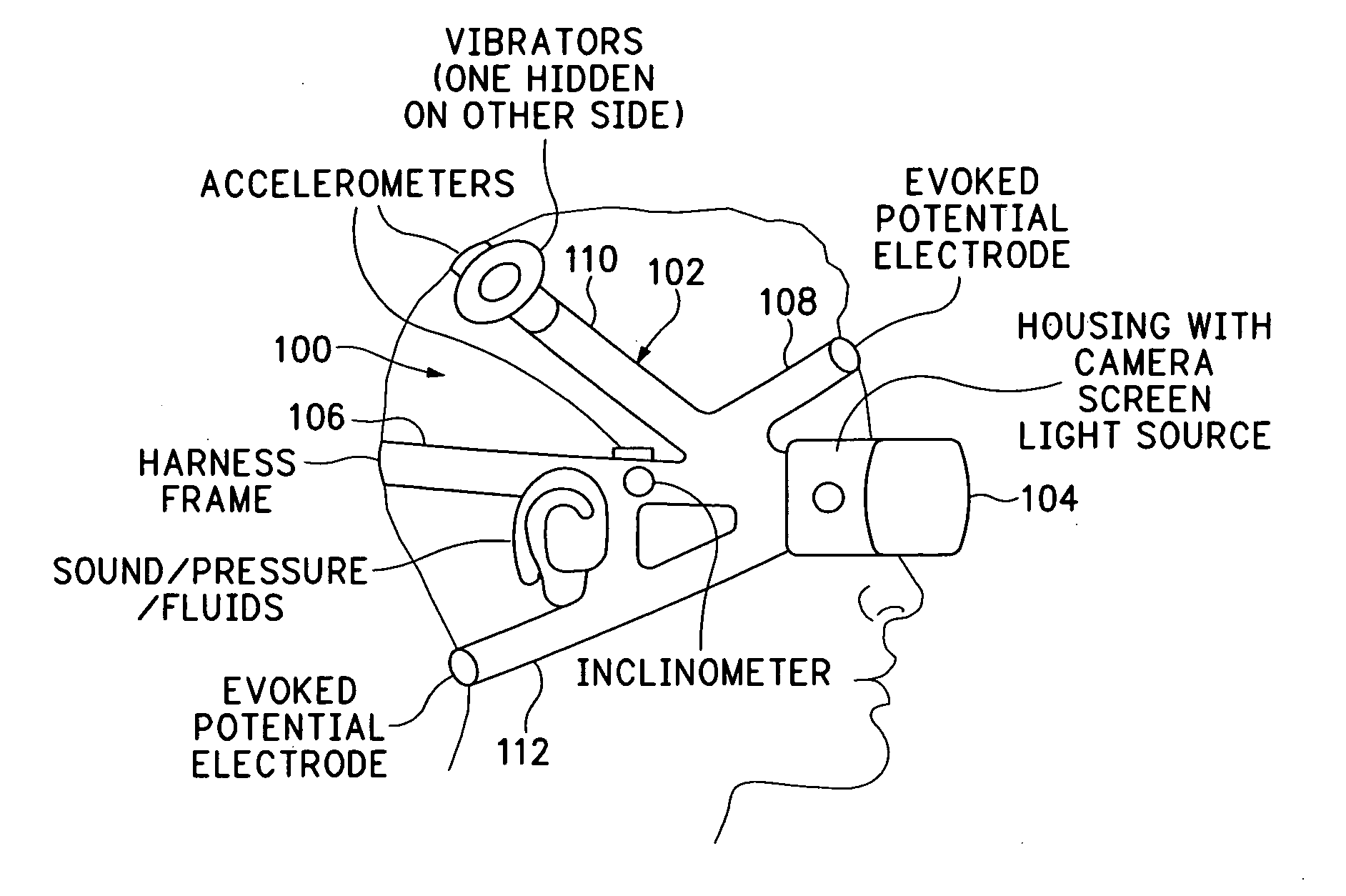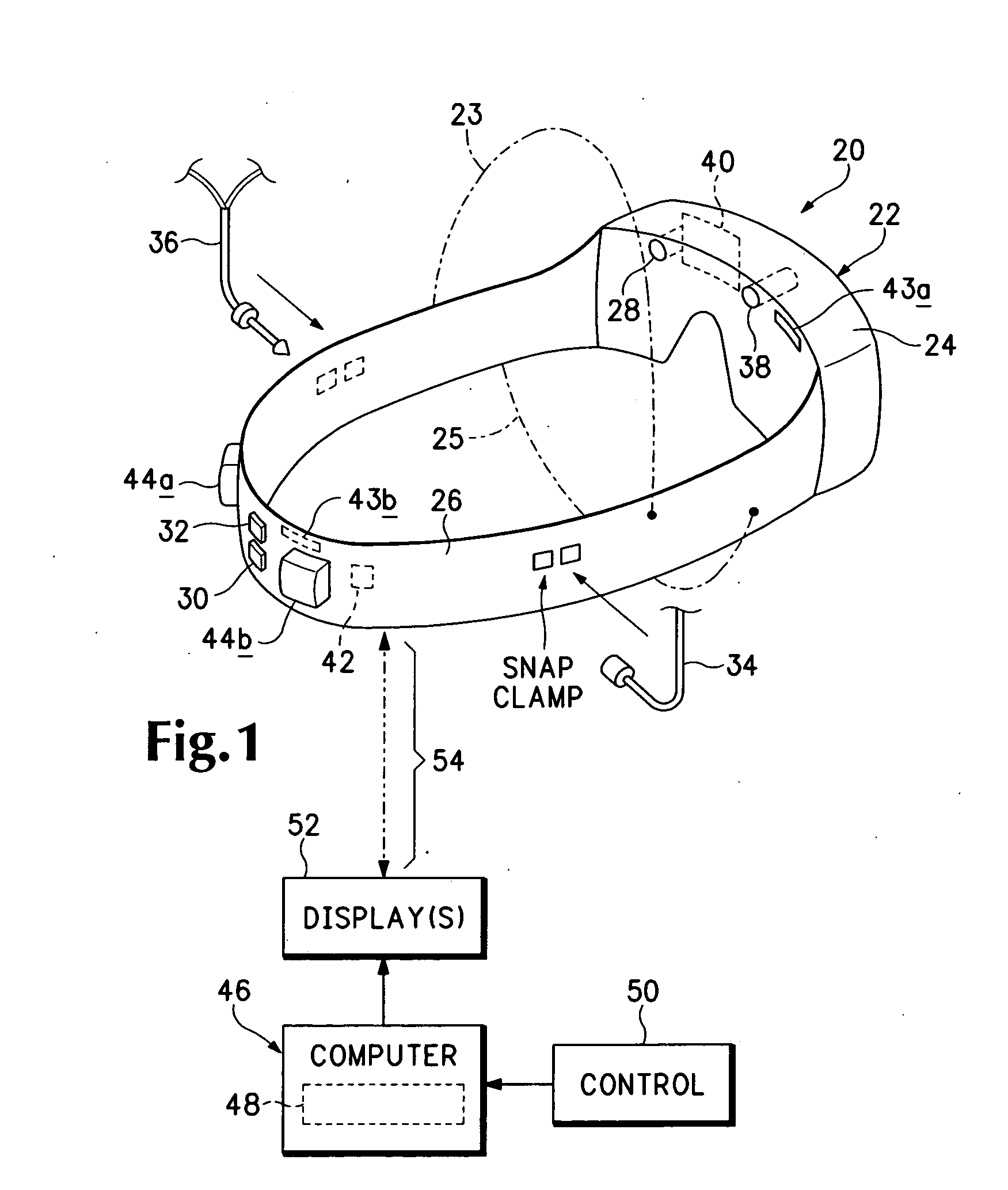Head-stabilized, nystagmus-based repositioning apparatus, system and methodology
a nystagmus-based and repositioning technology, applied in the field of head stabilization method and apparatus, can solve the problems of inability to achieve optimal effectiveness and accuracy of eng/vng test battery, symptom of vertigo, etc., and achieve the effect of reliable ability to perform
- Summary
- Abstract
- Description
- Claims
- Application Information
AI Technical Summary
Benefits of technology
Problems solved by technology
Method used
Image
Examples
Embodiment Construction
[0039]As has been mentioned above, the present invention, from a structural point of view, takes the form generally of apparatus for assisting in the computer-aided, substantially real-time diagnoses and treatments of vestibular disorders. That apparatus features head-wearable frame structure that is adapted for wearing on a subject's head in a condition of relative positional stability. The invention further features, in association with that frame structure, at least a pair of what are referred to as vestibular-parameter, data-parameter devices that are selectively anchorable to the frame structure in conditions of relative positional stability, both with respect to the frame structure, and with respect to each other. Each of these devices, in accordance with the invention, is adapted to engage in at least one of the activities which include (a) delivering to, and (b) receiving from, a subject's head vestibular-relevant parameter data. Appropriate communication structure connects ...
PUM
 Login to View More
Login to View More Abstract
Description
Claims
Application Information
 Login to View More
Login to View More - R&D
- Intellectual Property
- Life Sciences
- Materials
- Tech Scout
- Unparalleled Data Quality
- Higher Quality Content
- 60% Fewer Hallucinations
Browse by: Latest US Patents, China's latest patents, Technical Efficacy Thesaurus, Application Domain, Technology Topic, Popular Technical Reports.
© 2025 PatSnap. All rights reserved.Legal|Privacy policy|Modern Slavery Act Transparency Statement|Sitemap|About US| Contact US: help@patsnap.com



